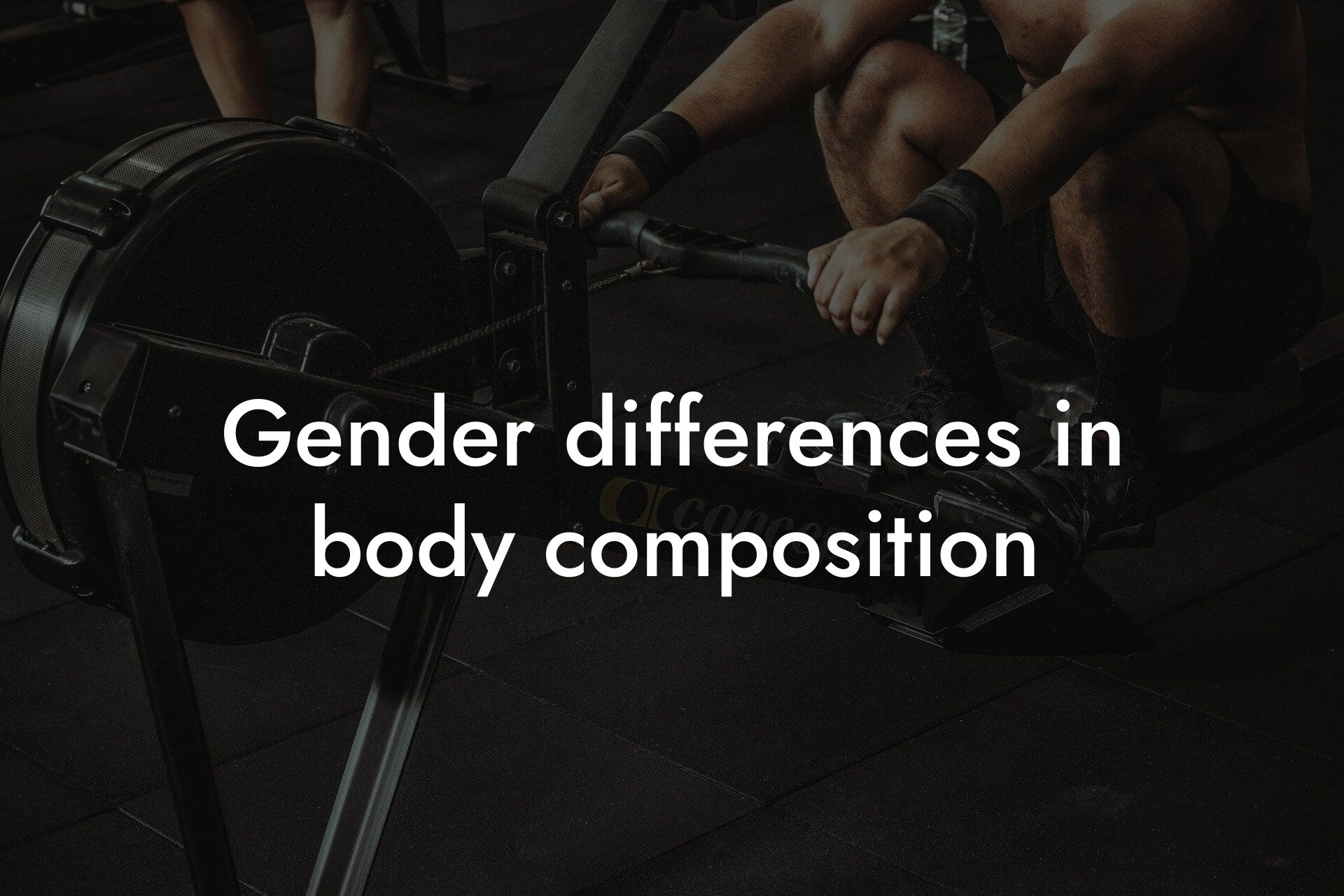As a high-earning professional, taking care of your physical appearance and overall health is crucial for success. One important aspect of this is understanding the different types of body fat and how they impact your health. In this article, we'll delve into the differences between subcutaneous and visceral fat, two types of fat that play distinct roles in your body.
Table of Contents
What is Subcutaneous Fat?
Subcutaneous fat, also known as subQ fat, is the layer of fat that lies just beneath the skin. It's the type of fat that you can pinch or feel when you touch your skin. Subcutaneous fat is made up of fatty cells that store energy in the form of triglycerides. This type of fat is found all over the body, but it's more prominent in areas such as the hips, thighs, and arms.
Subcutaneous fat serves several important functions, including:
- Insulation: Subcutaneous fat helps to regulate body temperature by providing a layer of insulation.
- Cushioning: It acts as a shock absorber, protecting internal organs from injury.
- Energy storage: Subcutaneous fat stores energy in the form of triglycerides, which can be broken down and used by the body when needed.
What is Visceral Fat?
Visceral fat, also known as intra-abdominal fat, is the type of fat that surrounds the internal organs in the abdominal cavity. It's located deep within the abdominal area, surrounding organs such as the liver, stomach, and intestines. Visceral fat is made up of fatty cells that store energy, but it's more metabolically active than subcutaneous fat, meaning it's more prone to inflammation and insulin resistance.
Visceral fat is a major risk factor for various health conditions, including:
- Type 2 diabetes
- Cardiovascular disease
- High blood pressure
- Certain types of cancer
Key Differences between Subcutaneous and Visceral Fat
The main differences between subcutaneous and visceral fat lie in their location, function, and impact on overall health.
- Location: Subcutaneous fat is found just beneath the skin, while visceral fat is located deep within the abdominal cavity.
- Function: Subcutaneous fat serves as insulation, cushioning, and energy storage, whereas visceral fat is more metabolically active and prone to inflammation.
- Health impact: Subcutaneous fat is generally considered benign, while visceral fat is a major risk factor for various health conditions.
How to Measure Subcutaneous and Visceral Fat
Measuring subcutaneous and visceral fat can be done using various methods, including:
- Body mass index (BMI): A calculation based on height and weight that provides an estimate of overall body fat.
- Waist circumference: A measurement of the circumference of the waist, which can indicate visceral fat levels.
- Dual-energy X-ray absorptiometry (DEXA): A non-invasive test that uses X-rays to measure bone density and body composition, including subcutaneous and visceral fat.
- Computed tomography (CT) scans: A medical imaging test that uses X-rays and computer technology to produce detailed images of the body, including visceral fat.
The Importance of Monitoring Visceral Fat
Visceral fat is a major risk factor for various health conditions, making it essential to monitor and manage levels. Here are some reasons why:
- Reducing chronic disease risk: High levels of visceral fat are linked to an increased risk of chronic diseases, such as type 2 diabetes and cardiovascular disease.
- Improving insulin sensitivity: Reducing visceral fat can improve insulin sensitivity, reducing the risk of developing insulin resistance and type 2 diabetes.
- Enhancing overall health: Managing visceral fat levels can lead to improved overall health, including better weight management, improved blood lipid profiles, and reduced inflammation.
Lifestyle Changes to Reduce Visceral Fat
Reducing visceral fat requires a combination of healthy lifestyle changes, including:
- Diet: Eating a balanced diet rich in whole foods, fruits, and vegetables, and low in processed foods and added sugars.
- Exercise: Engaging in regular physical activity, such as cardio and strength training, to improve insulin sensitivity and burn belly fat.
- Stress management: Practicing stress-reducing techniques, such as meditation and yoga, to reduce cortisol levels and promote weight loss.
- Sleep: Getting adequate sleep (7-9 hours per night) to help regulate hunger hormones and support weight loss.
In conclusion, understanding the differences between subcutaneous and visceral fat is crucial for maintaining optimal health and reducing the risk of chronic diseases. By monitoring visceral fat levels and making healthy lifestyle changes, you can take control of your health and achieve your fitness goals. At Tano Performance Group, we offer comprehensive body assessments using DEXA technology to help you understand your body composition and make informed decisions about your health. Contact us today to learn more.
Frequently Asked Questions
What is the main difference between subcutaneous and visceral fat?
Subcutaneous fat is the layer of fat just beneath the skin, whereas visceral fat is the fat that surrounds internal organs in the abdominal cavity. This fundamental difference in location has significant implications for overall health and physique.
What is subcutaneous fat, and where is it found?
Subcutaneous fat, also known as superficial fat, is the layer of fat located just beneath the skin. It is found all over the body, but tends to accumulate in areas such as the hips, thighs, and arms. This type of fat serves as an energy reserve and provides insulation and cushioning for the body.
What is visceral fat, and where is it found?
Visceral fat, also known as intra-abdominal fat, is the fat that accumulates in the abdominal cavity and surrounds internal organs such as the liver, stomach, and intestines. This type of fat is a major risk factor for chronic diseases, including type 2 diabetes, cardiovascular disease, and certain types of cancer.
Why is visceral fat more dangerous than subcutaneous fat?
Visceral fat is considered more dangerous because of its proximity to vital organs and its ability to release inflammatory chemicals into the bloodstream. These chemicals can increase the risk of chronic diseases, whereas subcutaneous fat is generally less metabolically active and does not have the same level of negative impact on overall health.
How do I know if I have too much visceral fat?
Measuring visceral fat can be challenging, but there are several indirect methods that can provide an estimate. These include measuring waist circumference, body mass index (BMI), and using imaging techniques such as CT or MRI scans. A waist circumference of 40 inches or more in men and 35 inches or more in women is often used as an indicator of excess visceral fat.
What are the health risks associated with excess visceral fat?
Excess visceral fat is associated with an increased risk of chronic diseases, including type 2 diabetes, cardiovascular disease, certain types of cancer, and even dementia. It can also contribute to insulin resistance, high blood pressure, and elevated cholesterol levels.
How can I reduce visceral fat?
Reducing visceral fat requires a combination of diet, exercise, and lifestyle changes. Eating a healthy, balanced diet that is low in sugar and saturated fats, increasing physical activity levels, and managing stress can all help to reduce visceral fat. Additionally, getting enough sleep and quitting smoking can also be beneficial.
What role does diet play in reducing visceral fat?
Diet plays a critical role in reducing visceral fat. Eating a diet that is high in whole, unprocessed foods such as fruits, vegetables, whole grains, and lean proteins can help to reduce visceral fat. Avoiding sugary drinks, fast food, and saturated fats can also be beneficial.
What types of exercise are most effective for reducing visceral fat?
High-intensity interval training (HIIT) and strength training exercises have been shown to be effective for reducing visceral fat. Aerobic exercises such as running, cycling, and swimming can also be beneficial. It's important to find a type of exercise that you enjoy and can stick to in the long term.
How long does it take to see results from reducing visceral fat?
The time it takes to see results from reducing visceral fat can vary depending on individual factors such as starting point, diet, and exercise routine. However, with consistent effort, it's possible to start seeing results in as little as 6-8 weeks.
Can visceral fat be completely eliminated?
While it's possible to significantly reduce visceral fat, it's unlikely that it can be completely eliminated. Visceral fat serves some important functions in the body, such as providing energy and protecting organs. However, reducing excess visceral fat can have a significant impact on overall health and wellbeing.
How does visceral fat affect body shape and appearance?
Visceral fat can affect body shape and appearance by causing the abdominal area to protrude. This can lead to a more rounded or "apple-shaped" appearance, which can be a source of insecurity for many individuals.
Can visceral fat be measured using body fat percentage?
Body fat percentage is not a direct measure of visceral fat, as it includes both subcutaneous and visceral fat. However, a high body fat percentage can be an indicator of excess visceral fat.
How does visceral fat affect bone density?
Visceral fat has been shown to have a negative impact on bone density, particularly in older adults. This can increase the risk of osteoporosis and fractures.
Can visceral fat be reduced through supplements or medications?
While there are some supplements and medications that claim to target visceral fat, there is limited scientific evidence to support their effectiveness. A healthy diet and regular exercise are generally the most effective ways to reduce visceral fat.
How does stress affect visceral fat?
Chronic stress can increase the production of cortisol, a hormone that promotes the storage of visceral fat. Managing stress through techniques such as meditation, yoga, or deep breathing exercises can help to reduce visceral fat.
Can visceral fat be inherited?
While there is some evidence to suggest that visceral fat may be influenced by genetic factors, it is not solely determined by genetics. Lifestyle factors such as diet and exercise play a much larger role in determining visceral fat levels.
How does visceral fat affect self-esteem and confidence?
Excess visceral fat can affect self-esteem and confidence, particularly if it leads to feelings of insecurity about body shape and appearance. Reducing visceral fat through healthy lifestyle changes can have a positive impact on overall self-esteem and confidence.
Can visceral fat be reduced in a short amount of time?
While it's possible to see some results in a short amount of time, significant reductions in visceral fat typically require a longer-term commitment to healthy lifestyle changes. Focus on making sustainable changes that you can maintain over time, rather than trying to make rapid changes.
How does visceral fat affect overall health and wellbeing?
Visceral fat has far-reaching implications for overall health and wellbeing, increasing the risk of chronic diseases and affecting mental health and self-esteem. Reducing visceral fat can have a significant impact on overall health and wellbeing.
What are some common misconceptions about visceral fat?
One common misconception is that visceral fat is only a concern for older adults. However, excess visceral fat can affect individuals of all ages. Another misconception is that visceral fat can be reduced through spot exercises or quick fixes, when in fact it requires a comprehensive approach that includes diet, exercise, and lifestyle changes.
How can I track my progress in reducing visceral fat?
Tracking progress can be challenging, but there are several methods that can be used, including measuring waist circumference, tracking body fat percentage, and using imaging techniques such as CT or MRI scans. It's also important to track overall health markers such as blood pressure, cholesterol levels, and blood sugar control.
Here are some related articles you might love...
- The role of brown fat in body composition
- How body composition changes with endurance training
- Gender differences in body composition
- Understanding bone marrow density in DEXA scans
- How DEXA scans detect visceral fat
- Advanced body composition metrics: Lean mass index
- The impact of muscle asymmetry on body performance
- How body composition affects metabolic rate
- How hydration levels affect body composition results
Zak Faulkner
Zak Faulkner is a leading authority in the realm of physical health and body composition analysis, with over 15 years of experience helping professionals optimise their fitness and well-being. As one the experts behind Tano Performance Group, Zak has dedicated his career to providing in-depth, science-backed insights that empower clients to elevate their physical performance and overall health.
With extensive knowledge of DEXA technology, Zak specializes in delivering comprehensive body assessments that offer precise data on body fat, muscle mass, bone density, and overall physique. His expertise enables individuals to make informed decisions and achieve their fitness goals with accuracy and confidence. Zak’s approach is rooted in a deep understanding of human physiology, combined with a passion for helping clients unlock their full potential through personalised strategies.
Over the years, Zak has earned a reputation for his commitment to excellence, precision, and client-focused service. His guidance is trusted by top professionals who demand the best when it comes to their health. Whether advising on fitness programs, nutritional strategies, or long-term wellness plans, Zak Faulkner’s insights are a valuable resource for anyone serious about taking their health and fitness to the next level.
At Tano Performance Group, Zak continues to lead our Content Team revolutionising how professionals approach their physical health, offering unparalleled expertise that drives real results.




